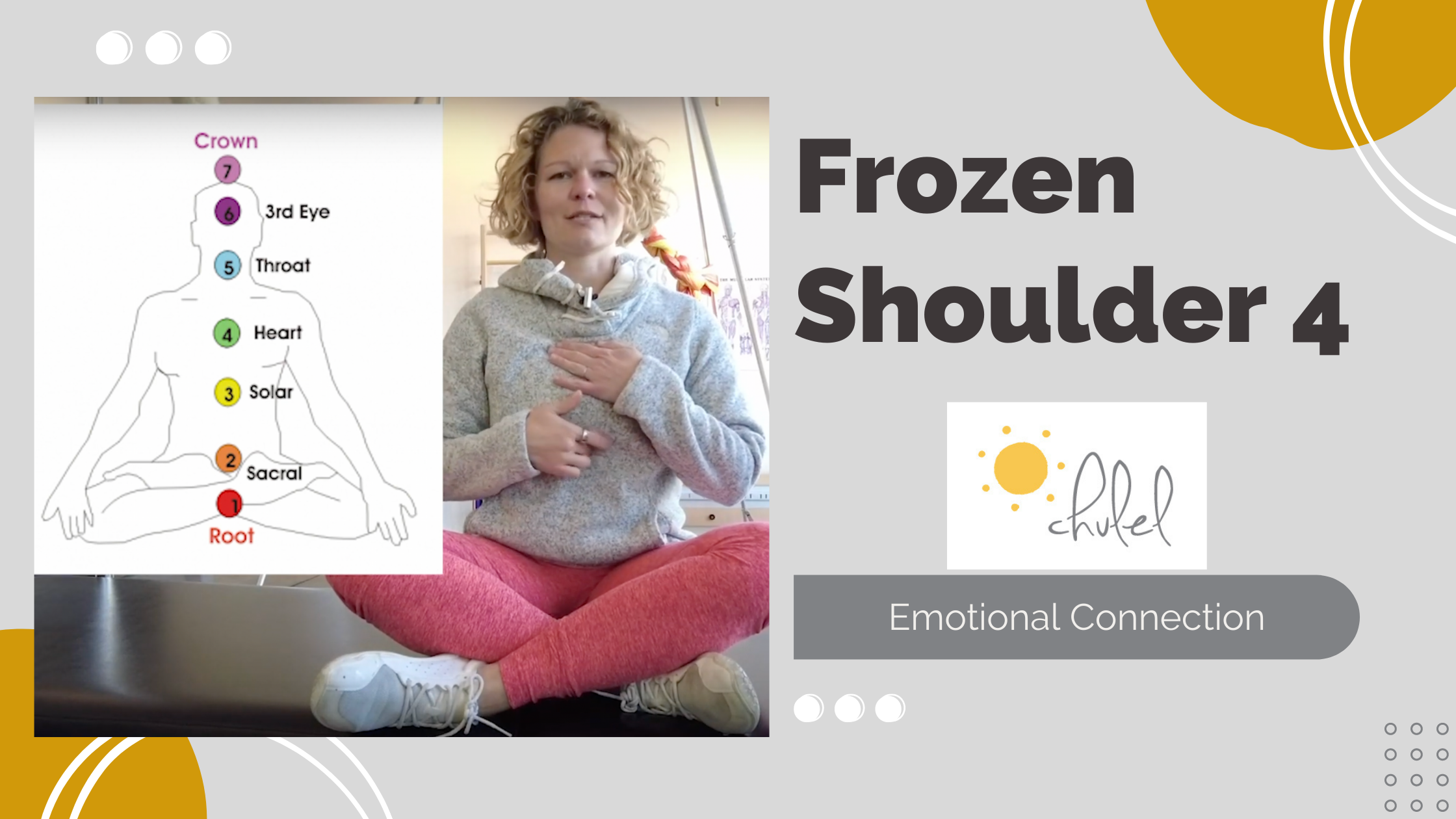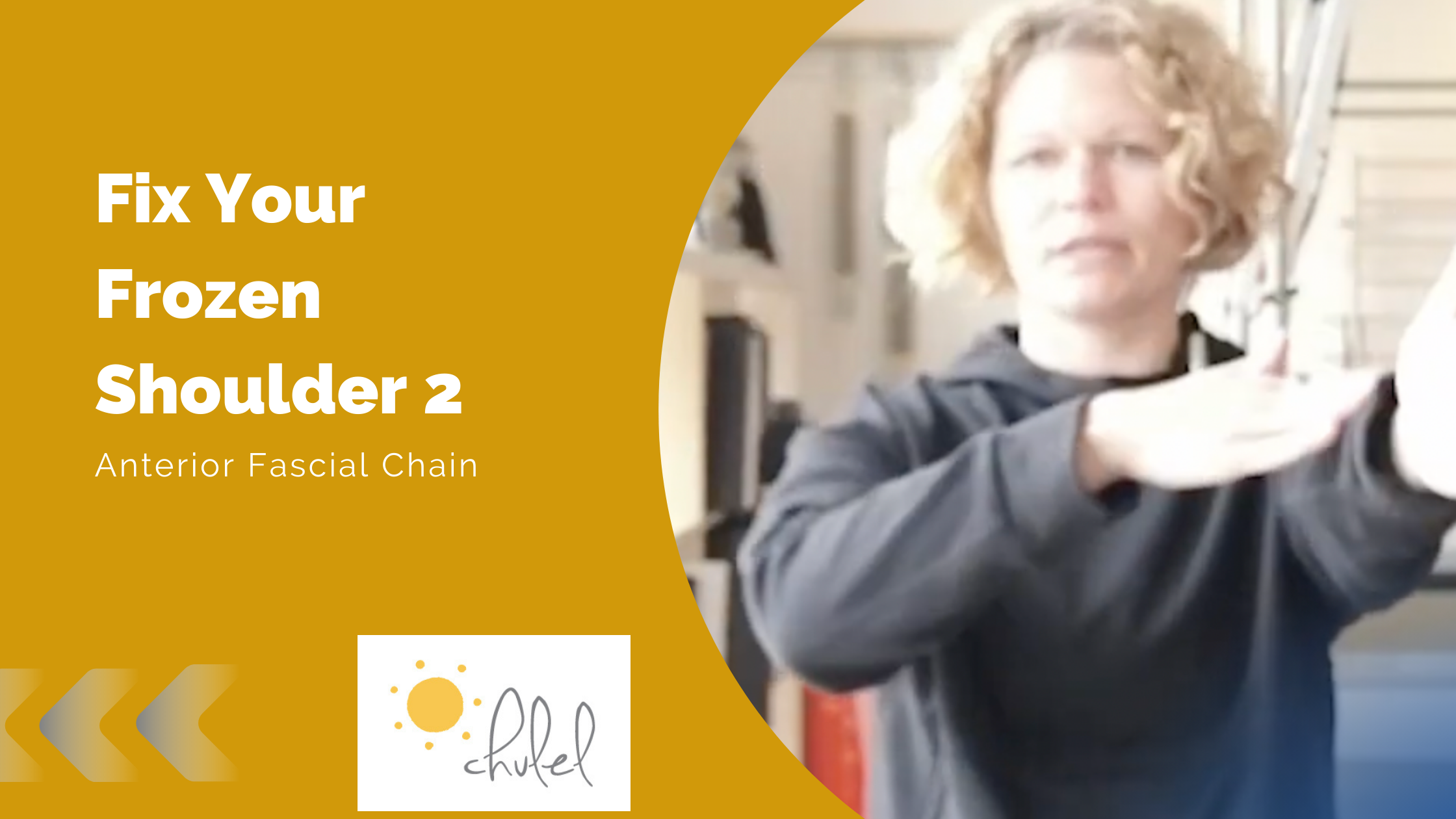We wrap up the last 2 segments of Fix Your Frozen Shoulder with a beginner and intermediate workout series. These are more like retraining your shoulders on how they’re supposed to move than a true, hard workout. Ultimately, you’d want to be able to do something like hang from a bar or do a pull up. For now, it’s reminding your brain that the ball and socket joint is different from the movement of your shoulder blade.
In the first episode, we first connect the movement of the shoulders to the core (your diaphragm) and then reinforce those movements both lying on your back and on the side. I always try to sequence connections in different planes with gravity because it allows the brain to really understand the movement of a joint. I find that when my clients do this, the brain better remembers the motions and it’s less active mental effort on the client in day-to-day life. We then do an external rotation exercise (shoulder opening) that allows for minimal cheating. If you feel it in your lower back, just back off the range of motion a bit. Next, we return back to the front of the shoulder for a simple pec major strengthener. Lastly, we add a little resistance for the shoulders while doing a big, full motion. It’s easy to cheat this by arching the back and faking the motion, so try to keep your spine as is and focus the movement at the shoulder blades. It may take time, particularly if your spine is stiff.
For the intermediate workout, we fine tune some of the smaller, stability muscles of the shoulders and add a bit more resistance to these motions. Hands down, one of the best investments is a resistance loop. It automatically triggers these small muscles to kick on and is great to add to more complex movements like push ups and pull ups when you get on the other side of a shoulder impingement.
We begin with protraction of the shoulders, the serratus. I refer to these as the ‘Bruce Lee muscles’ because they were so well-defined on him. Then we connect these muscles to the lats in a breaststroke motion. Picking up the theraloop, we do a quick variety of exercises to turn on the delts, subscapularis and triceps. You could easily add dumbells to this. Long before your shoulder pains, your spine had likely tightened up. So, we go through some spinal mobility in forward bending, side bending and then rotation. All of these are gentle in nature, but it gives you the idea that to really heal the impingement, everything is connected and you need to look at your spine, not just your shoulders.
I hope you’ve found this series helpful and that there are ways you can work to self-heal from home! Remember that frozen shoulder often needs an extra pair of hands to help. I’m here as well as any other hands-on practitioner to assist in that process.









